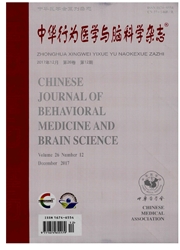

 中文摘要:
中文摘要:
为了探索悲伤刺激下的关键情感神经回路,利用功能核磁共振信号进行了动态因果建模.在Papez环路和相关先验知识的基础上建立情感环路的固有连接模型,并相应建立了3个调节连接模型.在这些模型中,实验刺激作用于不同的连接点,它们对脑区间的神经活动影响及对神经活动的调节方式都各自不同.然后通过贝叶斯模型比较,选出了最优模型.从群组分析中发现抑郁症患者前扣带回至右额下回的固有连接和调节连接均显著强于健康被试.随后将这些功能连接参数作为特征用于抑郁症分类,其中SVM分类器的准确率为80.73%.这也在一定程度上验证了功能连接用于抑郁症识别的有效性,并为抑郁症临床诊断提供了新的思路.
 英文摘要:
英文摘要:
Dynamic casual modeling of functional magnetic resonance imaging(fMRI) signals is employed to explore critical emotional neurocircuitry under sad stimuli. The intrinsic model of emotional loops is built on the basis of Papez's circuit and related prior knowledge, and then three modulatory connection models are established. In these models, stimuli are placed at different points, which represents they affect the neural activities between brain regions, and these activities are modulated in different ways. Then, the optimal model is selected by Bayesian model comparison. From group analysis, patients' intrinsic and modulatory connections from the anterior cingulate cortex (ACC) to the right inferior frontal gyrus (rlFG) are significantly higher than those of the control group. Then the functional connection parameters of the model are selected as classifier features. The classification accuracy rate from the support vector machine(SVM) classifier is 80.73%, which, to some extent, validates the effectiveness of the regional connectivity parameters for depression recognition and provides a new approach for the clinical diagnosis of depression.
 同期刊论文项目
同期刊论文项目
 同项目期刊论文
同项目期刊论文
 Multichannel matching pursuit of MEG signals for discriminative oscillation pattern detection in dep
Multichannel matching pursuit of MEG signals for discriminative oscillation pattern detection in dep 期刊信息
期刊信息
